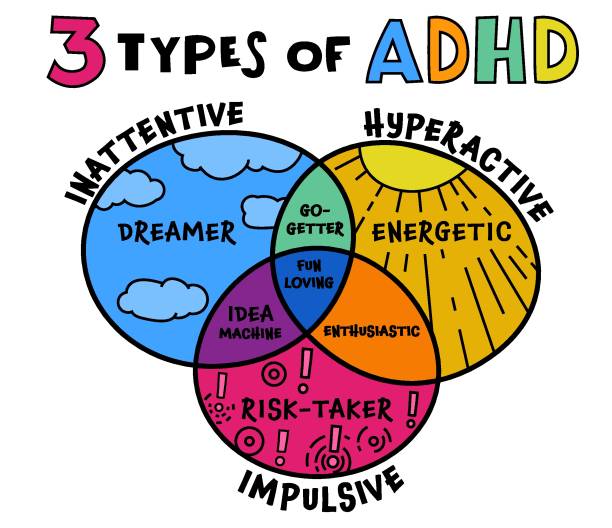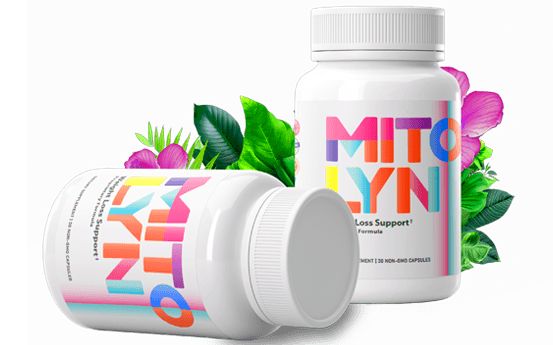Now Reading: ADHD Uncovered: Understanding the Symptoms and Science Behind the Disorder.
-
01
ADHD Uncovered: Understanding the Symptoms and Science Behind the Disorder.
ADHD Uncovered: Understanding the Symptoms and Science Behind the Disorder.

Did you know that ADHD (Attention-Deficit/Hyperactivity Disorder) affects over 6 million children in the U.S. alone—and millions more adults worldwide? Despite its prevalence, ADHD remains one of the most misunderstood mental health conditions. Often dismissed as mere laziness or a lack of discipline, ADHD is, in fact, a complex neurodevelopmental disorder rooted in brain chemistry and genetics. For those living with ADHD, it’s not just about being “distracted” or “hyperactive”—it’s a daily battle with focus, organization, and emotional regulation that can impact every aspect of life.
This article, ADHD Uncovered: Understanding the Symptoms and Science Behind the Disorder, aims to shed light on the realities of ADHD. We’ll explore the science behind the condition, break down its symptoms across different age groups, and provide actionable insights for managing ADHD effectively. Whether you’re seeking answers for yourself, a loved one, or simply want to better understand this often-misunderstood disorder, this guide will equip you with the knowledge and tools to navigate the world of ADHD with clarity and confidence.
ADHD isn’t just a label—it’s a unique way of experiencing the world. By understanding its causes, symptoms, and treatments, we can break down the stigma surrounding ADHD and create a more supportive environment for those affected. Let’s dive in and uncover the truth about ADHD, one fact at a time.
What is ADHD?
ADHD, or Attention-Deficit/Hyperactivity Disorder, is a neurodevelopmental disorder characterized by persistent patterns of inattention, hyperactivity, and impulsivity that interfere with daily functioning or development. It’s not just a behavioral issue or a result of poor parenting—it’s a medically recognized condition that affects the brain’s executive functions, such as focus, self-control, and organization.
Types of ADHD

ADHD manifests in three primary types, each with distinct symptoms:
- Inattentive Type:
- Difficulty sustaining attention on tasks or activities.
- Frequent daydreaming, forgetfulness, and disorganization.
- Often overlooked because it doesn’t involve hyperactivity.
- Hyperactive-Impulsive Type:
- Excessive fidgeting, restlessness, and difficulty staying seated.
- Impulsive behaviors like interrupting others or acting without thinking.
- More commonly diagnosed in children.
- Combined Type:
- A mix of inattentive and hyperactive-impulsive symptoms.
- The most common type of ADHD diagnosed in individuals.
Prevalence of ADHD
ADHD is one of the most common mental health conditions, affecting people of all ages, genders, and backgrounds. Here’s a closer look at the numbers:
- Children: Approximately 6.1 million children (9.4%) in the U.S. have been diagnosed with ADHD.
- Adults: About 4.4% of adults in the U.S. live with ADHD, though many remain undiagnosed.
- Gender Differences: Boys are more likely to be diagnosed with this disorder than girls (12.9% vs. 5.6%), but this may be due to differences in how symptoms present. Girls often exhibit inattentive symptoms, which are less noticeable than hyperactivity.
Myth vs. Reality
ADHD is surrounded by misconceptions that can lead to stigma and misunderstanding. Let’s debunk some of the most common myths:
- Myth: ADHD is just an excuse for laziness or bad behavior.
Reality: ADHD is a brain-based disorder with biological and genetic roots. It’s not a choice or a character flaw. - Myth: Only children have this disorder; they’ll grow out of it.
Reality: ADHD often persists into adulthood. While symptoms may change over time, many adults continue to experience challenges with focus, organization, and impulsivity. - Myth: ADHD is over-diagnosed.
Reality: While awareness of this disorder has increased, it’s still underdiagnosed in many populations, particularly in girls and women. - Myth: People with this disorder just need to try harder.
Reality: ADHD isn’t a matter of effort—it’s a neurological condition that requires understanding, support, and often professional treatment.
The Science Behind ADHD

ADHD is not just a behavioral or psychological issue—it’s a neurodevelopmental disorder with a strong biological basis. Understanding the science behind this disorder can help demystify the condition and foster greater empathy for those who live with it. Let’s dive into the key factors that contribute to ADHD: brain chemistry, brain structure, genetics, and environmental influences.
1. Brain Chemistry: The Role of Neurotransmitters
Neurotransmitters are chemical messengers in the brain that regulate mood, attention, and behavior. In individuals with this disorder, two key neurotransmitters—dopamine and norepinephrine—are often imbalanced.
- Dopamine:
- Often called the “feel-good” neurotransmitter, dopamine plays a critical role in reward processing, motivation, and focus.
- In ADHD, dopamine levels are often lower, making it harder to stay motivated, sustain attention, or feel rewarded by completing tasks.
- Norepinephrine:
- This neurotransmitter is involved in alertness, attention, and stress response.
- Lower levels of norepinephrine in ADHD can lead to difficulties with focus, impulsivity, and emotional regulation.
These imbalances explain why individuals with this disorder often struggle with tasks that require sustained attention or self-control. Medications like stimulants (e.g., Adderall, Ritalin) work by increasing the availability of these neurotransmitters, helping to improve focus and reduce impulsivity.
2. Brain Structure: The Prefrontal Cortex and Beyond
Research using brain imaging techniques (like MRI) has revealed structural and functional differences in the brains of individuals with ADHD. Key findings include:
- Prefrontal Cortex:
- This area of the brain, located just behind the forehead, is responsible for executive functions like decision-making, impulse control, and working memory.
- In people with this disorder, the prefrontal cortex tends to develop more slowly and may be less active, leading to challenges with organization, planning, and self-regulation.
- Basal Ganglia:
- This group of structures helps regulate movement and behavior.
- In ADHD, the basal ganglia may be smaller or less active, contributing to hyperactivity and impulsivity.
- Cerebellum:
- Traditionally associated with motor control, the cerebellum also plays a role in attention and emotional regulation.
- Differences in the cerebellum may contribute to the motor and cognitive symptoms of ADHD.
These structural differences don’t mean the ADHD brain is “broken”—it’s simply wired differently. With the right support and strategies, individuals with ADHD can thrive.
3. Genetic Factors: The Hereditary Nature of ADHD
ADHD has a strong genetic component, with studies suggesting that genetics account for about 70-80% of the risk for developing the condition.
- Family History:
- If a parent has this disorder, their child has a 50% chance of also having the disorder.
- Siblings of children with ADHD are also more likely to be diagnosed with the condition.
- Specific Genes:
- Researchers have identified several genes associated with ADHD, particularly those involved in dopamine regulation (e.g., DRD4 and DAT1 genes).
- These genetic variations can affect how dopamine is produced, transported, and processed in the brain.
While genetics play a major role, they don’t tell the whole story. Environmental factors also contribute to the development of this disorder.
4. Environmental Factors: Prenatal and Early Life Influences
In addition to genetics, certain environmental factors can increase the risk of developing ADHD. These include:
- Prenatal Exposure:
- Exposure to toxins like alcohol, tobacco, or drugs during pregnancy can affect fetal brain development and increase the likelihood of ADHD.
- Maternal stress or infections during pregnancy may also play a role.
- Premature Birth:
- Babies born prematurely or with low birth weight are at higher risk for ADHD.
- This may be due to underdeveloped brain structures or complications during birth.
- Early Childhood Trauma:
- Experiencing trauma, neglect, or abuse in early childhood can impact brain development and increase the risk of ADHD symptoms.
- Environmental Toxins:
- Exposure to lead or other environmental pollutants during early childhood has been linked to an increased risk of this disorder.
It’s important to note that these factors don’t guarantee someone will develop ADHD—they simply increase the risk, especially in individuals with a genetic predisposition.
Related: Autism: Understanding The Symptoms, Causes, and Support Strategies
Symptoms of ADHD
ADHD symptoms can vary widely depending on age, gender, and the type of ADHD. While the core features of inattention, hyperactivity, and impulsivity remain consistent, how they manifest changes over time. Let’s break down the symptoms across different life stages and explore how gender plays a role in how ADHD presents.
In Children
ADHD is often first identified in childhood, as symptoms tend to become noticeable when children start school. Common symptoms include:
- Inattention:
- Difficulty focusing on tasks or play activities.
- Frequent daydreaming or seeming “zoned out.”
- Trouble following instructions or completing homework.
- Easily distracted by external stimuli.
- Hyperactivity:
- Excessive fidgeting, squirming, or inability to stay seated.
- Running or climbing in inappropriate situations.
- Talking excessively or interrupting others.
- Impulsivity:
- Acting without thinking, such as blurting out answers or intruding on games.
- Difficulty waiting for their turn in activities or conversations.
Children with this disorder may struggle academically and socially, often leading to frustration and low self-esteem if their symptoms are misunderstood or unaddressed.
In Teens

As children with this disorder enter adolescence, their symptoms may evolve. While hyperactivity often decreases, challenges with attention, impulsivity, and emotional regulation can become more pronounced. Common symptoms in teens include:
- Procrastination and Poor Time Management:
- Difficulty starting or completing tasks, especially those that require sustained effort.
- Chronic lateness and trouble meeting deadlines.
- Emotional Sensitivity:
- Intense emotional reactions to criticism or failure.
- Mood swings and difficulty regulating emotions.
- Risk-Taking Behaviors:
- Impulsive decisions, such as reckless driving or experimenting with substances.
- Difficulty considering the long-term consequences of their actions.
- Struggles with Schoolwork:
- Trouble staying organized and keeping track of assignments.
- Poor academic performance despite having the ability to succeed.
Teens with ADHD may also face challenges in social relationships, as their impulsivity and emotional sensitivity can lead to misunderstandings or conflicts with peers.
In Adults
ADHD doesn’t disappear in adulthood—it simply changes. Many adults with ADHD were never diagnosed as children, and they may not realize their struggles are linked to the condition. Common symptoms in adults include:
- Chronic Lateness and Forgetfulness:
- Frequently missing appointments or forgetting important tasks.
- Losing items like keys, phones, or wallets.
- Difficulty Prioritizing Tasks:
- Overwhelmed by multiple responsibilities and unable to decide where to start.
- Trouble completing projects or meeting deadlines.
- Impulsive Decision-Making:
- Making hasty decisions without considering the consequences, such as impulsive spending or career changes.
- Difficulty maintaining long-term relationships due to impulsivity or emotional outbursts.
- Low Self-Esteem:
- Years of underachievement or being labeled as “lazy” or “scatterbrained” can take a toll on self-confidence.
- Adults with this disorder may feel frustrated or ashamed of their struggles.
Despite these challenges, many adults with ADHD also possess unique strengths, such as creativity, resilience, and the ability to think outside the box.
Gender Differences in ADHD Symptoms
ADHD often presents differently in males and females, which can lead to under-diagnosis or misdiagnosis in girls and women. Here’s how symptoms may differ:
- Males:
- More likely to exhibit hyperactive and impulsive symptoms, such as fidgeting, interrupting, or acting out.
- Often diagnosed in childhood due to more noticeable behaviors.
- Females:
- More likely to exhibit inattentive symptoms, such as daydreaming, forgetfulness, or disorganization.
- Often internalize their struggles, leading to anxiety, depression, or low self-esteem.
- May be overlooked or misdiagnosed because their symptoms are less disruptive.
These gender differences highlight the importance of recognizing ADHD in all its forms and ensuring that girls and women receive the support they need.
By recognizing the diverse ways this disorder can manifest, we can better support individuals at every stage of life. Whether you’re a parent, teacher, or someone living with ADHD, understanding these symptoms is the first step toward creating a more inclusive and empathetic world.
Diagnosing ADHD
Diagnosing ADHD is a comprehensive process that requires careful evaluation by trained professionals. Because ADHD symptoms can overlap with other conditions, such as anxiety, depression, or learning disabilities, a thorough assessment is essential to ensure an accurate diagnosis. Let’s explore the steps involved in diagnosing this disorder, the professionals who play a role, and the challenges that can arise, particularly for women and girls.
Evaluation Process
Diagnosing ADHD typically involves multiple steps to gather a complete picture of an individual’s symptoms and how they impact daily life. Here’s what the process usually looks like:
- Clinical Interviews:
- A healthcare professional will conduct in-depth interviews with the individual and, in the case of children, their parents or caregivers.
- Questions will focus on the individual’s behavior, attention span, impulsivity, and emotional regulation across different settings (e.g., home, school, work).
- The interview may also explore family history, as ADHD often has a genetic component.
- Behavioral Assessments:
- Standardized questionnaires and rating scales are used to assess ADHD symptoms. These may be completed by the individual, parents, teachers, or spouses.
- Examples include the ADHD Rating Scale or the Conners’ Rating Scales.
- These tools help quantify the severity of symptoms and determine whether they meet the diagnostic criteria outlined in the DSM-5 (Diagnostic and Statistical Manual of Mental Disorders).
- Observation and Reports:
- For children, input from teachers or caregivers is crucial to understand how symptoms manifest in different environments.
- Adults may be asked to provide examples of how their symptoms affect their work, relationships, or daily responsibilities.
- Rule Out Other Conditions:
- ADHD symptoms can overlap with other conditions, such as anxiety, depression, sleep disorders, or learning disabilities.
- The evaluator may conduct additional tests or screenings to rule out these possibilities.
- Medical Examination:
- A physical exam may be conducted to rule out medical conditions that could mimic ADHD symptoms, such as thyroid issues or hearing problems.
Professional Involvement
Diagnosing this disorder is a team effort that often involves multiple professionals, depending on the individual’s age and specific needs. Here’s who might be involved:
- Psychiatrists:
- Medical doctors who can diagnose ADHD, prescribe medication, and provide ongoing treatment.
- Often involved in complex cases or when co-occurring mental health conditions are present.
- Psychologists:
- Specialize in psychological testing and therapy.
- Can conduct comprehensive assessments to diagnose ADHD and recommend behavioral interventions.
- Pediatricians:
- Often the first point of contact for children with suspected ADHD.
- Can diagnose ADHD and provide initial treatment, though they may refer complex cases to specialists.
- Neurologists:
- May be involved if there are concerns about underlying neurological conditions.
- Educational Specialists:
- Can assess how ADHD impacts learning and recommend accommodations for school or work.
Challenges in Diagnosis
Despite increased awareness, diagnosing this disorder can be challenging, particularly for certain populations. Here are some of the key challenges:
- Overlap with Other Conditions:
- ADHD symptoms can mimic or co-occur with conditions like anxiety, depression, or learning disabilities, leading to misdiagnosis.
- For example, a child with ADHD might be mistakenly diagnosed with a learning disability, or an adult with ADHD might be treated for depression without addressing the underlying ADHD.
- Gender Differences:
- Girls and Women:
- Girls are more likely to exhibit inattentive symptoms (e.g., daydreaming, forgetfulness) rather than hyperactivity, which is less disruptive and often overlooked.
- They may internalize their struggles, leading to anxiety or depression, which can mask ADHD symptoms.
- As a result, girls are often underdiagnosed or misdiagnosed.
- Boys and Men:
- While boys are more likely to be diagnosed with this disorder, they may still face challenges if their symptoms are dismissed as “typical boy behavior.”
- Girls and Women:
- Cultural and Socioeconomic Factors:
- Cultural stigma or lack of access to healthcare can prevent individuals from seeking or receiving a diagnosis.
- In some communities, ADHD may be misunderstood or attributed to poor parenting or lack of discipline.
- Adult Diagnosis:
- Many adults with ADHD were never diagnosed as children, especially if their symptoms were mild or overlooked.
- Adults may not recognize their struggles as ADHD, attributing them to personality traits or stress.
- Subjectivity in Diagnosis:
- ADHD is diagnosed based on observed behaviors and self-reported symptoms, which can be subjective.
- Without clear biological markers, diagnosis relies heavily on clinical judgment and thorough evaluation.
By understanding the complexities of diagnosing this disorder, we can advocate for more accurate and inclusive assessments, ensuring that everyone who needs help receives the support they deserve. Whether you’re seeking a diagnosis for yourself or a loved one, knowing what to expect can make the process smoother and less daunting.
Managing ADHD: Treatment and Strategies

While ADHD is a lifelong condition, it is highly manageable with the right combination of treatments and strategies. From medication and therapy to lifestyle changes and practical tools, there are many ways to help individuals with ADHD thrive. Let’s explore the most effective approaches for managing ADHD symptoms and improving quality of life.
1. Medication
Medication is one of the most common and effective treatments for ADHD. It helps regulate brain chemistry, improving focus, impulse control, and overall functioning. Here’s an overview of the types of medications available:
Stimulant Medications:
- How They Work: Stimulants increase the levels of dopamine and norepinephrine in the brain, which helps improve attention and reduce impulsivity.
- Examples:
- Methylphenidate (e.g., Ritalin, Concerta)
- Amphetamines (e.g., Adderall, Vyvanse)
- Benefits:
- Fast-acting and effective for 70-80% of individuals with ADHD.
- Can significantly improve focus, organization, and self-control.
- Potential Side Effects:
- Insomnia, decreased appetite, increased heart rate, or mood swings.
- Side effects are usually manageable and often diminish over time.
Non-Stimulant Medications:
- How They Work: Non-stimulants target different neurotransmitters and are often used when stimulants are ineffective or cause unwanted side effects.
- Examples:
- Atomoxetine (Strattera)
- Guanfacine (Intuniv)
- Clonidine (Kapvay)
- Benefits:
- Longer-lasting effects and less risk of abuse.
- Can be a good option for individuals with anxiety or a history of substance use.
- Potential Side Effects:
- Fatigue, stomach upset, or dizziness.
Medication is not a one-size-fits-all solution, and finding the right type and dosage may take time. Regular follow-ups with a healthcare provider are essential to monitor effectiveness and adjust as needed.
2. Therapy
Therapy is a cornerstone of ADHD management, helping individuals develop coping skills, address emotional challenges, and improve relationships. Here are some of the most effective therapeutic approaches:
Cognitive Behavioral Therapy (CBT):
- How It Works: CBT helps individuals identify and change negative thought patterns and behaviors.
- Benefits:
- Teaches practical strategies for managing time, staying organized, and reducing procrastination.
- Addresses co-occurring conditions like anxiety or depression.
ADHD Coaching:
- How It Works: ADHD coaches provide personalized support to help individuals set goals, develop routines, and overcome challenges.
- Benefits:
- Focuses on practical, real-world solutions for managing ADHD symptoms.
- Provides accountability and encouragement.
Family Therapy:
- How It Works: Family therapy involves the entire family in the treatment process, helping them understand this disorder and improve communication.
- Benefits:
- Reduces conflict and fosters a supportive home environment.
- Helps parents develop effective strategies for managing their child’s behavior.
Mindfulness and Relaxation Techniques:
- How It Works: Practices like mindfulness meditation, deep breathing, or yoga can help improve focus and emotional regulation.
- Benefits:
- Reduces stress and enhances self-awareness.
- Complements other treatments by promoting mental clarity.
3. Lifestyle Changes
Healthy lifestyle habits can significantly improve ADHD symptoms and overall well-being. Here are some key areas to focus on:
Exercise:
- Why It Helps: Physical activity increases dopamine and norepinephrine levels, improving focus and reducing hyperactivity.
- Tips:
- Aim for at least 30 minutes of moderate exercise most days of the week.
- Activities like running, swimming, or yoga can be particularly beneficial.
Diet:
- Why It Helps: A balanced diet supports brain health and can help stabilize energy levels and mood.
- Tips:
- Focus on whole foods like fruits, vegetables, lean proteins, and whole grains.
- Limit sugar and processed foods, which can exacerbate ADHD symptoms.
- Consider omega-3 fatty acids (found in fish or supplements), which may improve attention and focus.
Sleep:
- Why It Helps: Poor sleep can worsen ADHD symptoms, while good sleep hygiene can improve focus and emotional regulation.
- Tips:
- Establish a consistent bedtime routine.
- Avoid screens and caffeine before bed.
- Create a calm, dark sleep environment.
4. Tools and Techniques
Practical tools and strategies can make a big difference in managing ADHD symptoms. Here are some popular options:
Planners and Calendars:
- How They Help: Visual reminders and structured schedules can improve time management and reduce forgetfulness.
- Tips:
- Use a daily planner or digital calendar to track tasks and appointments.
- Break tasks into smaller, manageable steps.
Productivity Apps:
- How They Help: Apps designed for ADHD can provide reminders, timers, and task management features.
- Examples:
- Todoist: For creating and organizing to-do lists.
- Focus@Will: Provides music designed to improve concentration.
- Forest: Encourages focus by growing a virtual tree while you work.
Time Management Techniques:
- How They Help: Techniques like the Pomodoro Method (working in short, timed intervals) can improve focus and reduce procrastination.
- Tips:
- Set a timer for 25 minutes of focused work, followed by a 5-minute break.
- Use visual timers or alarms to stay on track.
Organization Hacks:
- How They Help: A clutter-free environment can reduce distractions and improve productivity.
- Tips:
- Use labeled bins or folders to organize paperwork and belongings.
- Create designated spaces for frequently used items (e.g., keys, wallet).
By combining these treatments and strategies, individuals with this disorder can better manage their symptoms and lead fulfilling, successful lives. Whether you’re exploring options for yourself or a loved one, remember that ADHD is a journey—and with the right support, it’s one that can be navigated with confidence and resilience.
Conclusion
Living with ADHD—or supporting someone who does—can feel overwhelming at times, but you don’t have to navigate this journey alone. Whether you’re seeking clarity, support, or practical strategies, taking the first step can make all the difference. Here’s how you can move forward:
1. Seek Help
If you suspect that you or a loved one may have this disorder, don’t wait to seek help. Early diagnosis and intervention can lead to better outcomes and a higher quality of life.
Remember, seeking help is a sign of strength, not weakness. ADHD is a manageable condition, and with the right support, you or your loved one can thrive.
2. Explore Resources
Knowledge is power, and there are countless resources available to help you better understand and manage ADHD. Here are a few recommendations to get started:
- On Our Website:
- Check out our other articles on this disorder, such as “ADHD Coping Strategies for Adults” or “How to Support a Child with ADHD.”
- Download our free ADHD resource guide, packed with tips, tools, and expert advice.
- Books:
- “ADHD 2.0” by Edward Hallowell and John Ratey: New Science and Essential Strategies for Thriving with Distraction.
- “The ADHD Effect on Marriage” by Melissa Orlov: A must-read for couples navigating ADHD in their relationship.
- “Smart but Scattered” by Peg Dawson and Richard Guare: Practical strategies for improving executive function skills.
- Support Groups:
- Join local or online ADHD support groups to connect with others who understand your experiences.
- Organizations like CHADD (Children and Adults with Attention-Deficit/Hyperactivity Disorder) offer valuable resources and community support.
3. Engage with the Community
You’re not alone in this journey. Sharing your experiences, asking questions, and learning from others can provide invaluable support and encouragement.
- Share Your Story:
- Have you or a loved one been diagnosed with ADHD? What strategies have worked for you? Share your story in the comments below to inspire and help others.
- Ask Questions:
- If you have questions about ADHD symptoms, treatments, or coping strategies, don’t hesitate to ask. Our community is here to help!
- Connect with Others:
- Follow us on social media for daily tips, inspiration, and updates on ADHD-related topics. Join the conversation using #ADHDUncovered.
Take the Next Step Today
ADHD may present challenges, but it also comes with unique strengths and opportunities. By seeking help, exploring resources, and engaging with a supportive community, you can unlock your full potential and create a life that works for you.
Your journey starts now. Let’s take this step together.


















Pingback: ADHD Coping Strategies for Adults: Practical Tips to Thrive - The Oxymind
* * * Unlock Free Spins Today: https://sgencon.com/?bcnb4s * * * hs=c5102f2a393b4aaa59eeb48bfc9cb697*
73ut16
* * * Get Free Bitcoin Now * * * hs=c5102f2a393b4aaa59eeb48bfc9cb697*
1emxv3